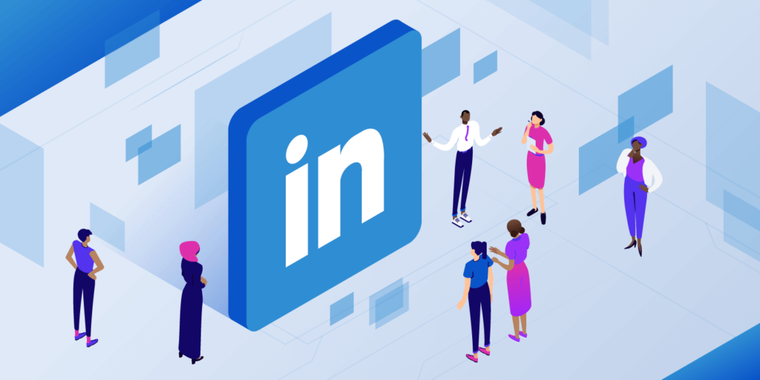
LinkedIn was once considered Facebook’s serious, corporate-oriented sibling – a place for white-collar professionals to connect online. But with more than 750 million users around the globe, across countless industries, it’s fair to say that this powerhouse platform has come a long way in its 17-odd years of operation.
While LinkedIn demographics still skew towards corporate, it’s far from a marketing dead end. In fact, recent studies by HubSpot found that LinkedIn’s lead conversion rates were a staggering 3X higher than competing platforms like Google Ads. They also reported the platform to be 277% more effective at lead generation than Twitter and Facebook. Despite these fantastic figures, just 10% of marketers report investing in the site.
This disparity represents huge untapped marketing potential – particularly in the B2B space. If you’re interested in taking advantage, here are five lead generation strategies to help you boost your sales.
Strategy one: Optimize your business profile
Building a solid business profile seems like an obvious place to start, but it’s a step that’s frequently rushed or misunderstood. Many use this space to list facts about their company, like their size, or regurgitate the tired ‘about’ section from their website. Although this information may prompt some visitors to investigate further, it’s unlikely to capture attention.
Instead, approach your business profile like it’s part of your marketing strategy. Start with compelling copy that speaks directly to your audience and addresses their pain points and include a description of the product or service you offer. Then, conclude with a pitch. This could be as simple as a ‘learn more’ call to action, with your website URL, or offering a free e-book to those who click through.
Remember: phrasing is key. The LinkedIn interface only displays two lines of text before users must click to read more, so you need to grab their attention right away and convince them to continue reading.
Strategy two: Publish posts that address industry pain points
LinkedIn encourages all users – individuals and businesses alike – to write posts and share content. The more people that interact with the post, either by reacting or commenting, the greater the reach. Before you publish a generic post full of industry-specific jargon though, think about your target B2B audience.
Sure, they might understand what you’re talking about, but will they care? Are you sharing anything insightful or new? By posting something void of personality, you’re doing your brand a disservice.
On the other hand, high quality content that informs and encourages interaction is far more likely to generate leads. Sharing profiles on your team members, opinions on industry changes and any new developments within your company will endear users to your brand without coming across as too promotional or pushy. It will also help establish your business as a thought leader in your niche.
Strategy three: Build compelling showcase pages
If you target multiple audiences with your products or services, you should be using showcase pages. Unlike regular company profiles, showcase pages allow businesses to segment their audience according to different facets of their operations, and create separate pages for each. The premise is simple: highlighting individual brands or subsets within a company to drive targeted engagement. Users can interact with one specific part of a business, and marketers can interact with qualified leads – it’s a win-win.
The structure of your business will determine how you should divide your showcase pages. Say, for instance, your company is in the SEO industry and works with both marketing agencies and small businesses. Rather than running one central business page, create one showcase page for agencies and one for small businesses; that way, your audience is segmented and you can target your marketing accordingly, generating relevant leads. If you offer a suite of products, build showcase pages for each one.
Strategy four: Create (or join) targeted groups
LinkedIn Groups are a lot like forums or digital meeting rooms; members can connect with others in their industry and build relationships beyond their immediate network of colleagues and friends. But they’re not just for regular LinkedIn users. Businesses can join or create groups to interact with potential customers, share industry insights and answer questions. They’re an organic way to nurture leads and strengthen brand reputation.
Currently, there are over 2 million groups on LinkedIn, so before you start your own, it’s best to peruse those already out there. This will save you time and effort attracting members to a brand new space and allow you to observe how groups operate.
It’s important to note that groups aren’t hubs for businesses to pump out advertisements and push their services. So, save your promotional content for your company page.
Strategy five: Add relevant connections
Never underestimate the power of LinkedIn connections. This fundamental part of the platform is a tried-and-true method of B2B marketing, allowing businesses – or staff – to directly engage with potential clients. Rather than sending out hundreds of connection requests to everyone you come across, use the Advanced People Search function to find relevant people. This way, you can adjust your search with filters like relationships, location, industry and language.
Once you’ve found potential leads, take some time to craft a personalised message for each one. By doing so, it’s clear you’ve put some thought into the request, improving your chances of acceptance.
To summarise
LinkedIn has grown from a humble business-focused platform into a social media force in the last decade. While it’s still a great place to network and make industry connections, it’s also a powerful tool for B2B marketing. Whether you’re new to the site or simply looking for ways to level-up your presence, investing time and resources into LinkedIn the right way can yield significant returns.
Article by: Digital Marketing Directory Australia
